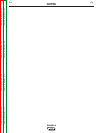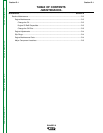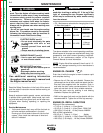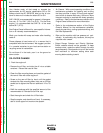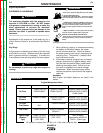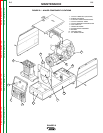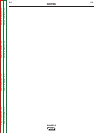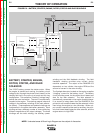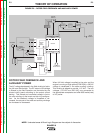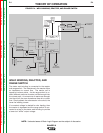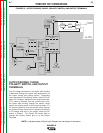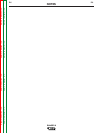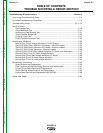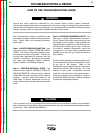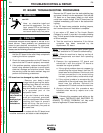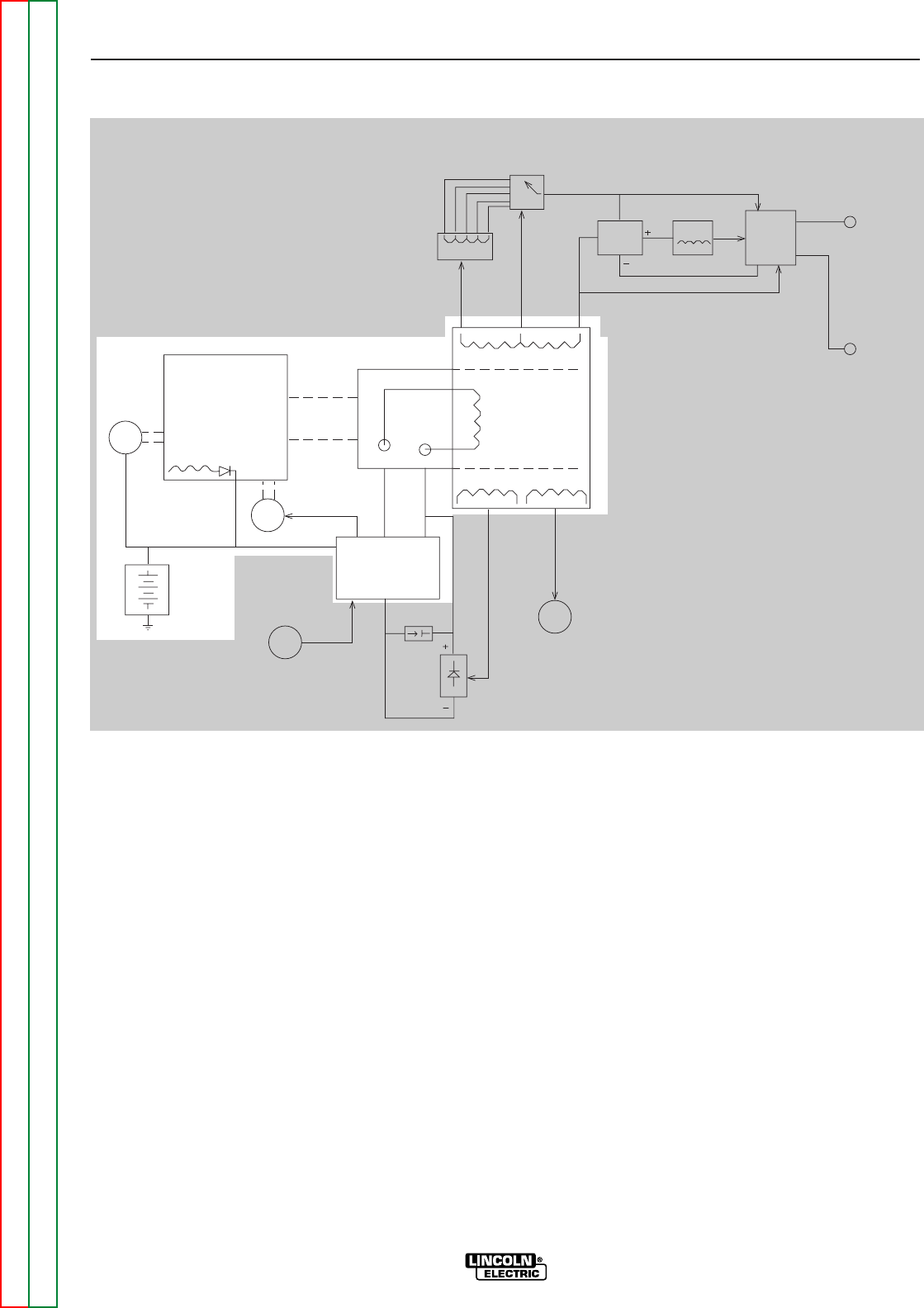
BATTERY, STARTER, ENGINE,
ROTOR, STATOR, AND IDLER
SOLENOID
The 12VDC battery powers the starter motor. When
the engine is started and running, the battery circuit
voltage is fed, through the printed circuit board, to the
rotating field coil in the rotor via a brush and slip ring
configuration. This excitation (“flashing”) voltage mag-
netizes the rotor lamination. The rotor is mechanically
coupled to the engine. This rotating magnet induces a
voltage in the stationary windings of the main alterna-
tor (stator). Three separate and isolated windings are
incorporated in the stator lamination assembly. Each
winding set has a different number of turns producing
different magnitudes of AC output voltages. The three
windings are the weld winding, the auxiliary power
winding and the field feedback winding. The field
feedback winding provides rotor current during
machine operation. The output of the RANGER 8 is
dependent on two criteria: the engine RPM and the
amount of current in the rotor winding.
The flywheel alternator, located on the engine, supplies
“charging” current for the battery circuit. The battery
circuit provides power for the printed circuit board and
also for the idler solenoid. The idler solenoid is
mechanically connected to the engine throttle linkage.
If no current is being drawn from the RANGER 8, the
printed circuit board activates the idler solenoid, which
then brings the engine to a low idle state. When out-
put current is sensed, either weld or auxiliary, the print-
ed circuit board deactivates the idler solenoid, and the
engine returns to high RPM.
THEORY OF OPERATION
E-2 E-2
RANGER 8
Return to Section TOC Return to Section TOC Return to Section TOC Return to Section TOC
Return to Master TOC Return to Master TOC Return to Master TOC Return to Master TOC
STARTER ENGINE
BATTERY
IDLER
SOLENOID
PRINTED
CIRCUT
BOARD
OUTPUT
CONTROL
MECHANICAL
ROTATION
FIELD
CAPACITOR
ROTOR
SLIP
RINGS
FIELD
BRIDGE
115 & 230VAC
RECEPTACLES
ROTOR
STATOR
STATOR
REACTOR
RANGE
SWITCH
OUTPUT
BRIDGE
CHOKE
AC
AC
POLARITY
SWITCH
ELECTRODE
TERMINAL
WORK
TERMINAL
FLYWHEEL
ALTERNATOR
FIGURE E.2 – BATTERY, STARTER, ENGINE, ROTOR, STATOR AND IDLER SOLENOID
NOTE: Unshaded areas of Block Logic Diagram are the subject of discussion.



